♥♥♥❥•♪♫¸☆¸♥ Lღ√Ƹ and Jღy ♥.✫'*°☆.`❥•♪♫"
Happy Imbolc !
A Time for Rebirth
and Purification !
¸¸.•♥´¨`♥•.¸¸.•♥´¨`♥•¨`♥•.¸¸.•♥´¨`♥•.♥•.¸¸.•♥´~ƸӜƷ
Imbolc Blessings to You All....We Love celebrating this
Special time of the Year ,
for it represents ,
amoungst other things ,
the end of ,and the transmission of ,
the old and negative ,
into the new and positive .
Our Family up North celebrate
the end of Winter and the
beginning of Spring ...
and Everyone lights candles ...
to bring in the fresh new Light energies...
and looks for signs
of sleepy Snowdrops peeping
through Their snowy duvet !

Here , in ' Sulina ' , We gather
together and have a
" Transformation Party "...
I told You the Fae LOVE to Party !
tee ! hee !
We write down any negatives that
may be around Us ,or attached to Us
on a piece of paper ...
which We burn in the candle flame
as We Thank them for their
Life Lessons and affirm
that they are no longer needed.
We then write , paint , draw
or " scrapbook " ,
all that We wish to manifest
in Our Lives this Year ....
then hang it on the wall , so that
We can easily
" visualise to manifest " !
Imbolc always co-incides perfectly
with the " end of Our old Year "
and the " beginning of Our New Year "...
this is because We are so busy
" helping Santa " until mid January ...
and then the " Sanctaury "
rests until now...
On re- openeing ,
We " start Our New Year "
and so .... LOVE being
in sync with Imbolc !
Such a good time to say
" Thank You and Goodbye'
to the Old Year and
gently allow the
New Year to Birth
and shower Us All with it's fresh
Golden Light energies
of Unconditional Love ,
Hope , Joy , Warm Hearts
and Peace .
Have a Magical Imbolc Everyone !
XXXXXXXXXXXXXXX

Above and below ,I have shared some
pictures ,interesting facts and stories
that I found , for You to enjoy !
XXXX Thank You XXXX
to Everyone who shared these
Imbolc Inspirations so
Lovingly and Freely
on the internet !
XXXXXXXXXXXXXXXXXXXX

From Wikipedia, the free encyclopedia
Related to Candlemas
" Imbolc (also Imbolg or Oimelc),
or St Brigid’s Day (Scots Gaelic Là Fhèill Brìghde,
Irish Lá Fhéile Bríde, the feast day of St. Brigid),
is an Irish festival marking the beginning of spring.
Most commonly it is celebrated on February 1
or 2 ,which falls halfway between the Winter Solstice
and the Spring Equinox in the northern hemisphere.
The festival was observed in Gaelic Ireland
during the Middle Ages.
Reference to Imbolc is made in Irish mythology,
in the Tochmarc Emire of the Ulster Cycle.
Imbolc was one of the four cross-quarter days
referred to in Irish mythology,
the others being Beltane, Lughnasadh and Samhain.
It has been suggested that it was originally
a pagan festival associated with the goddess Brigid,
who was later Christianised as St. Brigid.
In the 20th century, Imbolc was resurrected as
a religious festival in Neopaganism,
specifically in Wicca, Neo-druidry
and Celtic reconstructionism "
Related to Candlemas
" Imbolc (also Imbolg or Oimelc),
or St Brigid’s Day (Scots Gaelic Là Fhèill Brìghde,
Irish Lá Fhéile Bríde, the feast day of St. Brigid),
is an Irish festival marking the beginning of spring.
Most commonly it is celebrated on February 1
or 2 ,which falls halfway between the Winter Solstice
and the Spring Equinox in the northern hemisphere.
The festival was observed in Gaelic Ireland
during the Middle Ages.
Reference to Imbolc is made in Irish mythology,
in the Tochmarc Emire of the Ulster Cycle.
Imbolc was one of the four cross-quarter days
referred to in Irish mythology,
the others being Beltane, Lughnasadh and Samhain.
It has been suggested that it was originally
a pagan festival associated with the goddess Brigid,
who was later Christianised as St. Brigid.
In the 20th century, Imbolc was resurrected as
a religious festival in Neopaganism,
specifically in Wicca, Neo-druidry
and Celtic reconstructionism "
"Imbolc translates as 'in the belly',
so this should give you some idea of what
so this should give you some idea of what
this festival is about - the early stirrings
of Spring in the womb of the Earth.
The seeds are starting to stir in the ground,
despite the cold.
One of the other names for this festival,
Oimelc, means 'in milk'
This refers to the beginning of lactation in
cows and ewes, as this is the time of year
that calves and lambs are born.
It is a Fire festival but with
the emphasis on Light,
celebrating it's return as the
days grow longer with the return of the Sun.
Imbolc is traditionally a time for purification,
which has given rise to spring-cleaning!
Brush those cobwebs away and start afresh.
As this is a time of rebirth and new beginnings
it's also an appropriate time for thinking about
what you'd like to accomplish,
for making attainment goals,
choosing a new skill to learn."
"The holiday was, and for many still is,
a festival of the hearth and home,
and a celebration of the lengthening days
and the early signs of spring.
Celebrations often involved hearthfires,
special foods (butter, milk, and bannocks, for example),
divination or watching for omens,
candles or a bonfire if the weather permits.
Imbolc is traditionally a time of weather prognostication,
and the old tradition of watching to see if serpents or badgers
came from their winter dens is perhaps a
precursor to the North American Groundhog Day"

Imbolc is the day the Cailleach
— the hag of Gaelic tradition —
gathers her firewood for the rest of the winter.
Legend has it that if she intends to make the
winter last a good while longer,
she will make sure the weather on
Imbolc is bright and sunny,
so she can gather plenty of firewood.
Therefore, people are generally relieved
if Imbolc is a day of foul weather,
as it means the Cailleach is asleep
and winter is almost over.
On the Isle of Man, where she is
known as Caillagh ny Groamagh,
the Cailleach is said to have been seen on
Imbolc in the form of a gigantic bird,
carrying sticks in her beak.
Fire and purification are an important
aspect of this festival.
Brigid (also known as Brighid, Bríde, Brigit, Brìd)
is the Gaelic goddess of poetry,
healing and smithcraft.
As both goddess and saint she is also
associated with holy wells,
sacred flames, and healing.
The lighting of candles and fires
represents the return
of warmth and the increasing power of
the Sun over the coming months.
St. Brigid's Day
In the modern Irish Calendar,
Imbolc is variously known as the
Feast of Saint Brigid (Secondary Patron of Ireland),
Lá Fhéile Bríde, and Lá Feabhra —
the first day of Spring.
Christians may call the day "Candlemas".
Long celebrated as
"the feast of the Purification of the Virgin".
One folk tradition that continues in both
Christian and Pagan homes on
St. Brigid's Day (or Imbolc)
is that of the Brigid's Bed.
The girls and young, unmarried, women
of the household or village create a
corn dolly to represent Brigid,
called the Brideog
("little Brigid" or "young Brigid"),
adorning it with ribbons and
baubles like shells or stones.
They make a bed for the Brideog to lie in.
On St. Brigid's Eve (January 31),
the girls and young women gather together in
one house to stay up all night with the Brideog,
and are later visited by all the young men of
the community who must ask
permission to enter the home,
and then treat them and
the corn dolly with respect.
Brigid is said to walk the earth on Imbolc eve.
Before going to bed, each member of the household
may leave a piece of clothing or strip
of cloth outside for Brigid to bless.
The head of the household will
smother (or "smoor") the fire
and rake the ashes smooth.
In the morning,
they look for some kind of mark on the ashes,
a sign that Brigid has passed
that way in the night or morning.
The clothes or strips of cloth are brought inside,
and believed to now have powers
of healing and protection.
On the following day, the girls carry the
Brideog through the village or neighborhood,
from house to house, where this representation
of the Saint/Goddess is welcomed with great honor.
Adult women
— those who are married or who run a household —
stay home to welcome the Brigid procession,
perhaps with an offering of coins or a snack.
Since Brigid represents the light half of the year,
and the power that will bring people from
the dark season of winter into spring,
her presence is very important at this time of year.
To begin Our Celebrations...
here's a card for You to Create...
enjoy !

This card is under
' Minky's Create-a-card"
in Our Special Creative Club...
XXX FOR NEW VISITORS XXX
E-mail Us at
faerienuffolk@gmail.com
if You wish to join
Our Creative Family
and to receive Our Gifts
XXXXXXXXXXXXXXX



























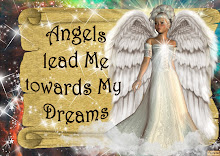.jpg)




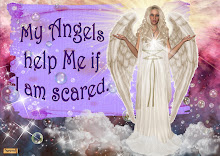.jpg)



.jpg)

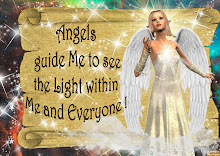.jpg)



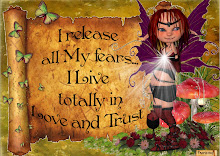.jpg)

.jpg)



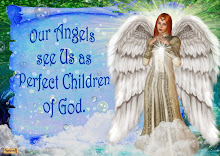.jpg)

.jpg)


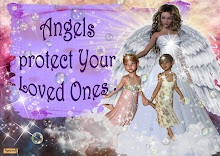.jpg)

.jpg)



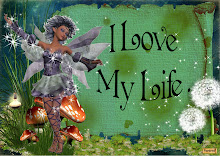.jpg)

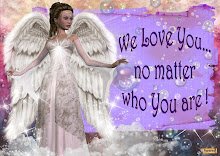.jpg)







No comments:
Post a Comment